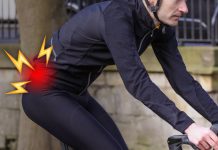For many riders, switching to clipless pedals is a rite of passage from casual to ‘proper’ cyclist. But while they have unarguable advantages, learning to use presents a few pitfalls.
Making the move to clipless pedals – where your shoes are held in place by a sprung mechanism like a ski binding – is laced with fear and trepidation for most cyclists. Locking feet to pedals conjures images of imprisonment and a loss of control.
Most of this fear stems from the idea that you won’t be able to get your foot out of the pedal when it’s time to stop. It’s true that for people new to clipless systems, a zero-speed fall is almost an inevitability. This type of fall happens when you’ve essentially stopped, and haven’t allowed enough time to unhitch your foot from the pedal.
An awkward dance between you, the stationary bike, and your foot ensues. The inability to disengage your foot results in a slow motion toppling over. You are left flailing on the ground with both feet stuck to the pedals.
Usually, the only way out of this fix is to get your foot out of the shoe. It’s never pretty. It’s always embarrassing. The worst injury is usually a bruise to your ego.
If you ask most cyclists that are using clipless pedals, they’ll probably tell you that they have experienced this rite of passage. If they haven’t, they know someone who has. I certainly have, and mine was even worse because I already had one foot out of the pedals. I fell to the side that was still locked into place. Classy.
The good news is that you can reduce the risk of having your own zero-speed experience. There is a way to make the switch to clipless without learning things the hard way.
In a perfect world, your local neighbourhood bike store will have a stationary trainer that they let you use to help you get familiar with clipless pedals. By setting your bike up in a trainer, you can practice getting in and out of the pedals without the fear of falling over.
If your local shop doesn’t have a trainer available, do this. After your pedals and cleats are installed, find a place where you can get on your bike and hold on to a counter top, a wall, or a railing; anything that you can use to stabilise yourself.
Next, get on your bike, and step in to your pedals. You’ll know you’re in by the telltale snapping noise you hear. Pedal backwards to get used to how your feet now feel.
To release your foot from the pedals, twist your heel away from the bike. Your foot should be parallel to the crank before you twist. If you point your toe down and twist, then you are more than likely not at the correct angle to disengage. Drop your heel, twist it, and out you’ll come.
Usually, you’ll have one foot in, while your dominant foot is the one that you put down when you are stopped. You’ll figure out which foot feels more natural to you. When you have both feet in the pedals, your body has a way of letting you know which is your default foot for coming out first.
Repeat these steps several times. Make sure that not much effort is required to snap in, or twist out of the pedals. If so, then you can find the tension adjustment, and with an allen key, back it off.
Once you feel comfortable getting in and out of the pedals, it’s time to add movement into the mix. Before you do this, remember these two golden rules of clipless pedal usage:
1. Your feet do not have to be locked to the pedals for you to start pedaling.
Physics doesn’t stop just because your feet are sitting on top of the pedals, rather than being locked into place. Getting yourself up to speed before clipping in to your pedals will make the whole experience easier.
To start, just put one foot on a pedal, push off, sit on the saddle, and then rest your other foot on its pedal. Get moving a little bit, and then try snapping one foot in. If you start to slow down too much before being snapped in, just pedal some more. Make sure you have a nice long stretch of road or pavement so that you can allow time for Rule 2.
2. Anticipate your stops.
Zero speed falls happen mostly because people wait too long to remove their foot from a pedal before they come to a stop. Again, because physics doesn’t cease, you can remove your foot long before you need to stop and still turn the pedals round.
To practice taking your foot out with time to spare, pick an object that is many yards away from you. Let’s say 50 yards away. It could be a parked car, a telephone pole, anything that you can see. Start rolling, and when you are 25 yards away from that object, take your foot out of the pedal by twisting your heel.
Once it’s out, you can rest it on the pedal again, and even pedal some more if you need to. Then, as you slow down, your foot will be ready to put down on the ground. Practice this several times, and gradually, you’ll be able to wait longer to take your foot out of the pedal.
By remembering these two rules, you can become a confident clipless pedal user. It won’t take long before it’s second nature. Then, you’ll wonder why you didn’t start using them sooner. Clop clop.














